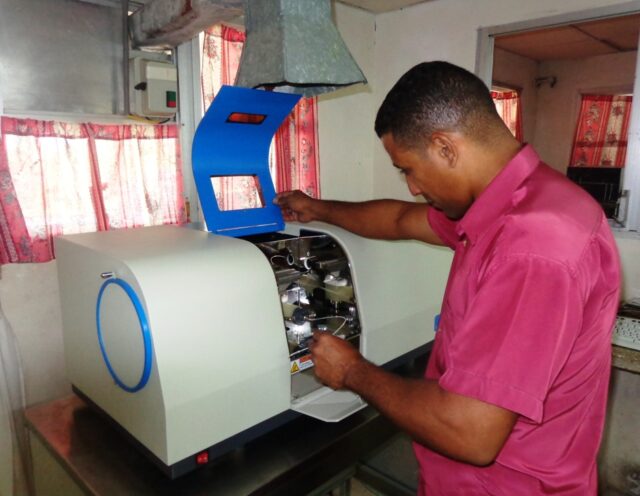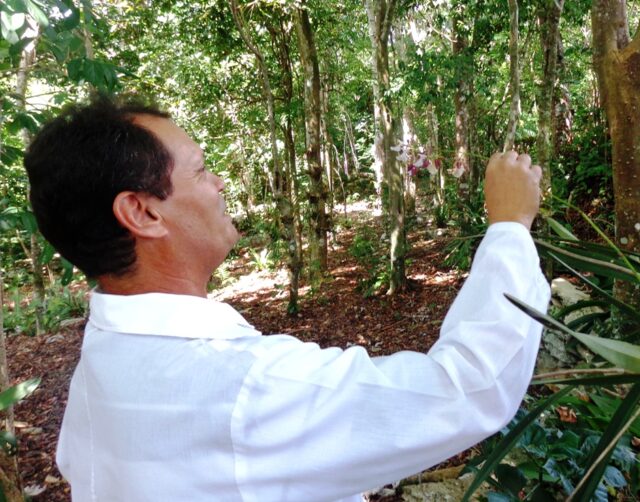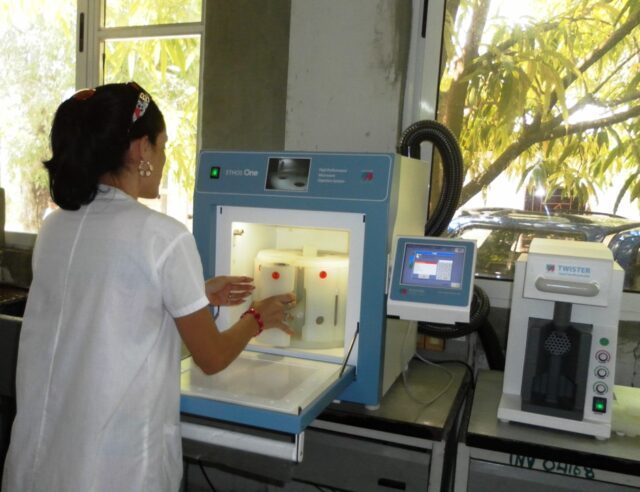 Another January 15 comes, a day chosen to commemorate the Cuban Science Day, in memory of the events that on the same date in 1960, during the celebration of the twentieth anniversary of the Cuban Speleological Society, Commander in Chief Fidel Castro Ruz gave a speech where he said: “The Future of Our Country Necessarily Has to Be a Future of Men of Science and Thought”
Another January 15 comes, a day chosen to commemorate the Cuban Science Day, in memory of the events that on the same date in 1960, during the celebration of the twentieth anniversary of the Cuban Speleological Society, Commander in Chief Fidel Castro Ruz gave a speech where he said: “The Future of Our Country Necessarily Has to Be a Future of Men of Science and Thought”
The motto has marked throughout the country the work of men and women who often anonymously, and in the most dissimilar conditions, work to introduce science and innovation in all processes for the economic and social development of the nation.
The commemoration of the Cuban Science Day in Guantanamo where a large community of scientists and researchers provide their contribution to the implementation of scientific projects and innovation and technological transfer that promote the increase in the economic results of the territory and a higher quality of life for the population.

Although in the Cuban easternmost and most mountainous territory, during the final decades of the 19th century and the first half of the 20th there were, in isolation, different personalities who carried out some scientific experiments in different fields, it was not until after January 1, 1959, with the triumph of the Cuban Revolution, we can talk about the application of science and technology in favor of the socioeconomic development of Guantanamo.
During the last 64 years, Guantanamo science has gone through different moments in its development, with concrete facts which has been turned into unquestionable merits for the province and the country. Among them, the awarding of the Saving the Dry Lands World Prize stands out, given to the scientific community of the province for the sustained actions in the soil improvement processes.
The highpoint came with the trip to the cosmos of Arnaldo Tamayo Méndez, from Guantanamo, on September 18, 1980. The name of Cuba and our province has never been placed higher.

Due to its importance in the productive and comprehensive development of the territory, the creation of institutions such as the Coffee and Cocoa Station and the Mountain Development Center, the only one in the territory accredited for research, where numerous investigative and research projects are carried out, had a great impact on technology transfer that show their results and outline the route to follow for the growth of agricultural production, fundamentally, in the Cuban hills.
In these years, the provincial sugarcane research stations and the Soil Research Station were also born, as well as the Center for Technological Applications for Sustainable Development (CATEDES), the latter promotes the use of renewable energies, and the execution of environmental studies.
Currently, the province has almost twenty scientific institutions, highlighting the work of universities and other research centers, experimental stations, laboratories and other entities of various organizations.
Without a doubt, for Cuba, in its current conditions, and fundamentally for Guantanamo, a territory marked by the three great challenges that were posed by Fidel on July 26, 1985: the exodus from the mountains, drought and salinity, it is essential that The scientific capital forged by the Revolution is increasingly dedicated to achieving new products and services.
There are multiple results of the scientific projects that materialize in Guantanamo, aimed at the establishment and development of agroecological and sustainable productive systems, which incorporate technological improvements in the management of soils, water and biodiversity, the improvement of meteorological services and environmental issues at regional and local scales, adaptation to climate change and food security in rural communities.
Guantanamo scientists stand out also for the creation of bioproducts and the search for sustainable alternatives for animal production and the practical application of these results in mountainous locations in the eastern region of the country. They carry out works on the recovery of important species classified at different levels of threat of extinction, the improvement of the quality of life in communities of the Turquino Plan and the creation of capacities for risk management in the face of extreme natural threats.
It is the commitment of Guantanamo researchers to make better use of knowledge, achieving a greater link between the different actors of the territorial system of Science, Technological Innovation and Environment that allows the generation of new products and new technologies, generalizing scientific research within.
Thus achieving the essential connection between science and economy in a way that allows increasing commercial production, substituting imports, increasing exports, which will always be a greater sustainable economic and social development of the Guantanamo that people aspire.
Translated by Liubis Balart Martinez